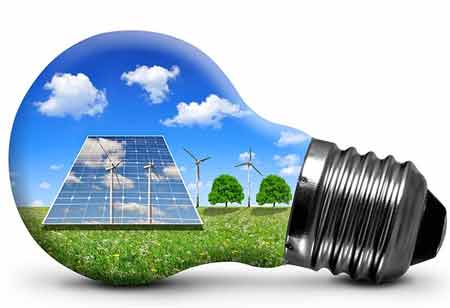

Thank you for Subscribing to Energy Business Review Weekly Brief

Semiconductors play a significant role in solar energy technology as light absorbs energy from semiconductors in PV cells and transfers it to electrons, generating power.
Technologies that generate energy from renewable and clean sources rely heavily on semiconductors. In PV cells, semiconductor materials have a higher conductivity than insulators. In contrast to metals, these materials do not conduct electricity well. Solar cells use semiconductors such as crystalline silicon (c-Si) and cadmium telluride (CdTe). When exposed to light, semiconductors in PV cells absorb the energy and transfer it to electrons. Electrons flow through the semiconductor material as a result of the absorbed additional energy. The current generated in the semiconductor is then collected by conductive metal contacts and grid-like lines on solar cells. Solar cells, also known as solar panels, are connected together to generate power. A PV semiconductor's bandgap indicates which wavelengths of light the material can absorb and convert into electrical energy. When the semiconductor's bandgap matches the wavelength of the light shining on the PV cell, solar cells are more efficient at utilizing available light energy. PV cell efficiency measures how effectively the cell converts light energy into electricity. In addition to wavelengths and intensity of the available light, several performance characteristics of the cell influence efficiency. Parameters affecting solar cell performance and design: The refractive index, absorption coefficient, and bandgap energy of a semiconductor determine its ability to absorb visible and other radiation. Diffusion coefficients and mobility of charge carriers also influence carrier transport. The width of a junction's space-charge region depends on the concentration of doping atoms, either acceptor atoms or donor atoms. Moreover, the diffusion length and lifetime of excess carriers have a direct impact on recombination-generation processes. Solar Cell Semiconductor materials are: Solar cells use silicon extensively as a semiconductor material because it is one of the most abundant materials on Earth. Silicon atoms are arranged in a crystal lattice formation in c-Si cells. Organizing the lattice increases the efficiency of light-to-electricity conversion. Silicon solar cells are cheaper, have a long lifespan, and are highly efficient. After 25 years, silicon-based cells are still able to generate 80 percent of their initial power. The most common thin-film PV semiconductors used in thin-film solar cells are CdTe and CIGS. CdTe cells can be manufactured cost-effectively, but they are less efficient than silicon cells. CIGS cells also have high efficiencies and suitable properties for use as PV semiconductor materials. However, manufacturing these materials by combining four elements is extremely challenging. For long-term operation, both CIGS and CdTe require greater protection than silicon.
I agree We use cookies on this website to enhance your user experience. By clicking any link on this page you are giving your consent for us to set cookies. More info